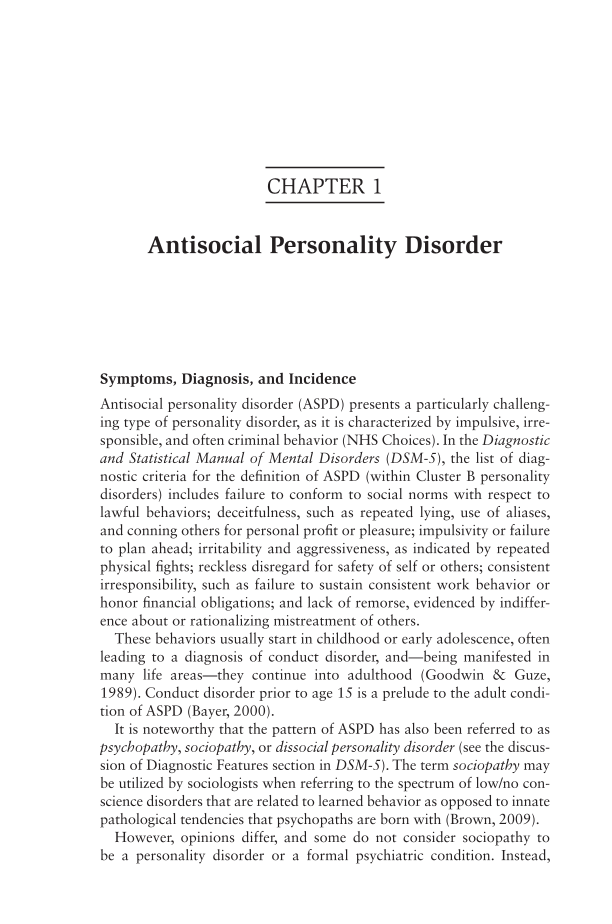CHAPTER 1 Antisocial Personality Disorder Symptoms, Diagnosis, and Incidence Antisocial personality disorder (ASPD) presents a particularly challeng- ing type of personality disorder, as it is characterized by impulsive, irre- sponsible, and often criminal behavior (NHS Choices). In the Diagnostic and Statistical Manual of Mental Disorders (DSM-5), the list of diag- nostic criteria for the definition of ASPD (within Cluster B personality disorders) includes failure to conform to social norms with respect to lawful behaviors deceitfulness, such as repeated lying, use of aliases, and conning others for personal profit or pleasure impulsivity or failure to plan ahead irritability and aggressiveness, as indicated by repeated physical fights reckless disregard for safety of self or others consistent irresponsibility, such as failure to sustain consistent work behavior or honor financial obligations and lack of remorse, evidenced by indiffer- ence about or rationalizing mistreatment of others. These behaviors usually start in childhood or early adolescence, often leading to a diagnosis of conduct disorder, and—being manifested in many life areas—they continue into adulthood (Goodwin & Guze, 1989). Conduct disorder prior to age 15 is a prelude to the adult condi- tion of ASPD (Bayer, 2000). It is noteworthy that the pattern of ASPD has also been referred to as psychopathy, sociopathy, or dissocial personality disorder (see the discus- sion of Diagnostic Features section in DSM-5). The term sociopathy may be utilized by sociologists when referring to the spectrum of low/no con- science disorders that are related to learned behavior as opposed to innate pathological tendencies that psychopaths are born with (Brown, 2009). However, opinions differ, and some do not consider sociopathy to be a personality disorder or a formal psychiatric condition. Instead,
Document Details My Account Print multiple pages
Print
You have printed 0 times in the last 24 hours.
Your print count will reset on at .
You may print 0 more time(s) before then.
You may print a maximum of 0 pages at a time.


























































































































































































































































